II.2.2 Pompeii. House of Loreius Tiburtinus or House of D. Octavius Quartio.
Excavated 1916, 1918, 1921, 1933-35 and 1973. Linked to II.2.5.
Part 1 2 3 4 5 6 7 8 9 10 11 12 13 Plan
Room “i”, upper euripus

II.2.2 Pompeii.
April 2022. Room “i”, looking south. Photo courtesy of Giuseppe Ciaramella.

II.2.2 Pompeii. March
2024.
Room “i”, looking west along upper euripus. Photo courtesy of Giuseppe Ciaramella.

II.2.2 Pompeii. 8th June 2024.
Room “i”, looking west along upper euripus, with actor playing the part of an ancient pompeian. Photo courtesy of Giuseppe Ciaramella.
Historical reconstruction entitled L’altra Pompei prende vita (The other Pompeii comes to life).

II.2.2 Pompeii. 8th June 2024.
Room “i”, reproduction items that would have been used by the ancient pompeian. Photo courtesy of Giuseppe Ciaramella.
Historical reconstruction entitled L’altra Pompei prende vita (The other Pompeii comes to life).

II.2.2 Pompeii. March 2024. Room “i”, looking south-west at
west end of upper euripus. Photo
courtesy of Giuseppe Ciaramella.

II.2.2 Pompeii. July 2017. Room “i”, looking south-west from south
end of pseudoperistyle “g”, on right.
Foto Annette Haug, ERC
Grant 681269 DÉCOR.

II.2.2 Pompeii. July 2017. Room
“i”, detail from pilaster with remaining painted decoration.
Foto Annette Haug, ERC Grant 681269 DÉCOR.

II.2.2 Pompeii. July 2017. Room
“i”, looking south-east towards statue of Mnemosyne or Erato
Foto Annette Haug, ERC Grant 681269 DÉCOR.

II.2.2 Pompeii. October 2022.
Marble statue of the muse Erato, on display in exhibition in Palaestra. Photo courtesy of Klaus Heese

II.2.2 Pompeii. July 2017. Room “i”, statue of Mnemosyne or
Erato
Foto Annette Haug, ERC
Grant 681269 DÉCOR.

II.2.2 Pompeii. January 2023.
Room “i”, looking south to front of statue of Mnemosyne or Erato.
On display in exhibition in the Palaestra. Photo courtesy of Johannes Eber.

II.2.2 Pompeii. July 2017. Room “i”, front of statue of Mnemosyne
or Erato, looking south.
Foto Annette Haug, ERC
Grant 681269 DÉCOR.
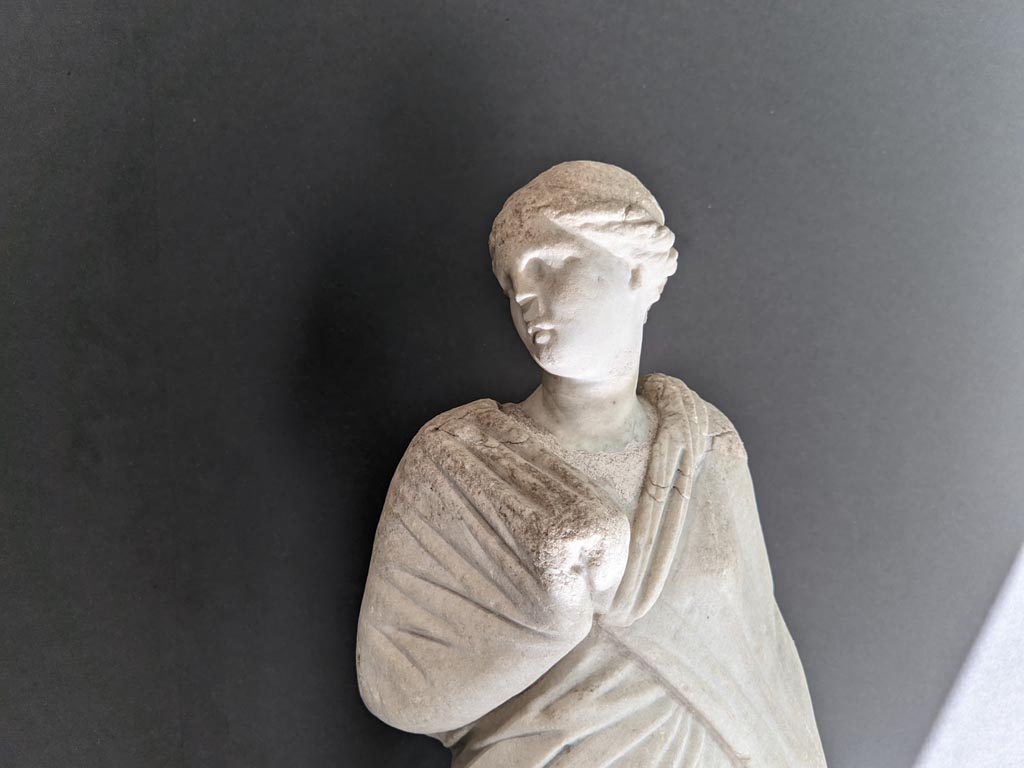
Detail of statue of muse Mnemosyne or
Erato, on display in exhibition in the Palaestra. Photo
courtesy of Giuseppe Ciaramella.

II.2.2 Pompeii. July 2017. Room “i”, rear of statue of Mnemosyne
or Erato, looking north.
Foto Annette Haug, ERC
Grant 681269 DÉCOR.

II.2.2 Pompeii. May 2016.
Room “i”, looking north-east across upper euripus towards doorway to “myths” room “h” and north wall of upper euripus.
Replaced statue of the muse Erato or Mnemosyne. SAP inventory number 2909. Photo courtesy of Buzz Ferebee.

II.2.2 Pompeii. 1957. Room “i”, looking north-east across upper garden area. Photo by Stanley A. Jashemski.
Jashemski describes the two surviving statues as, one of Polyhymnia (SAP 2917) and the second of Mnemosyne (SAP 2909).
The names on her photographs however are reversed.
See Jashemski, W. F., 1993. The Gardens of Pompeii, Volume II: Appendices. New York: Caratzas. (p. 80-1, Figs 84-85).
Source: The Wilhelmina and Stanley A. Jashemski archive in the University of Maryland Library, Special Collections (See collection page) and made available under the Creative Commons Attribution-Non Commercial License v.4. See Licence and use details.
J57f0472

II.2.2 Pompeii but shown as II.5.2 on photo. Pre-1937-39.
Room “i”, looking north-west towards west end of upper euripus with statue of Muse Erato or Mnemosyne.
The statue of the muse Erato or Mnemosyne and a sphinx (SAP inventory number 2930) are shown.
Photo courtesy of American Academy in Rome, Photographic Archive. Warsher collection no. 1903.
The statue originally stood on one of the six bases along the southern side of the canal, which probably held statues of muses, of which only this and one other have been found. Jashemski describes the two surviving statues as, one of Polyhymnia (SAP 2917) and the second of Mnemosyne (SAP 2909).
The names on her photographs however are reversed.
See Jashemski, W. F., 1993. The Gardens of Pompeii, Volume II: Appendices. New York: Caratzas. (p. 80-1, Figs 84-85).

Marble statues of the muse Polyhymnia, on left, and muse Erato or Mnemosyne, on right, on display in exhibition in Palaestra.
Photo courtesy of Giuseppe Ciaramella.

Marble statues of the muse Polyhymnia, on left, and muse Erato or Mnemosyne, on right, on display in exhibition in Palaestra.
Photo courtesy of Giuseppe Ciaramella.
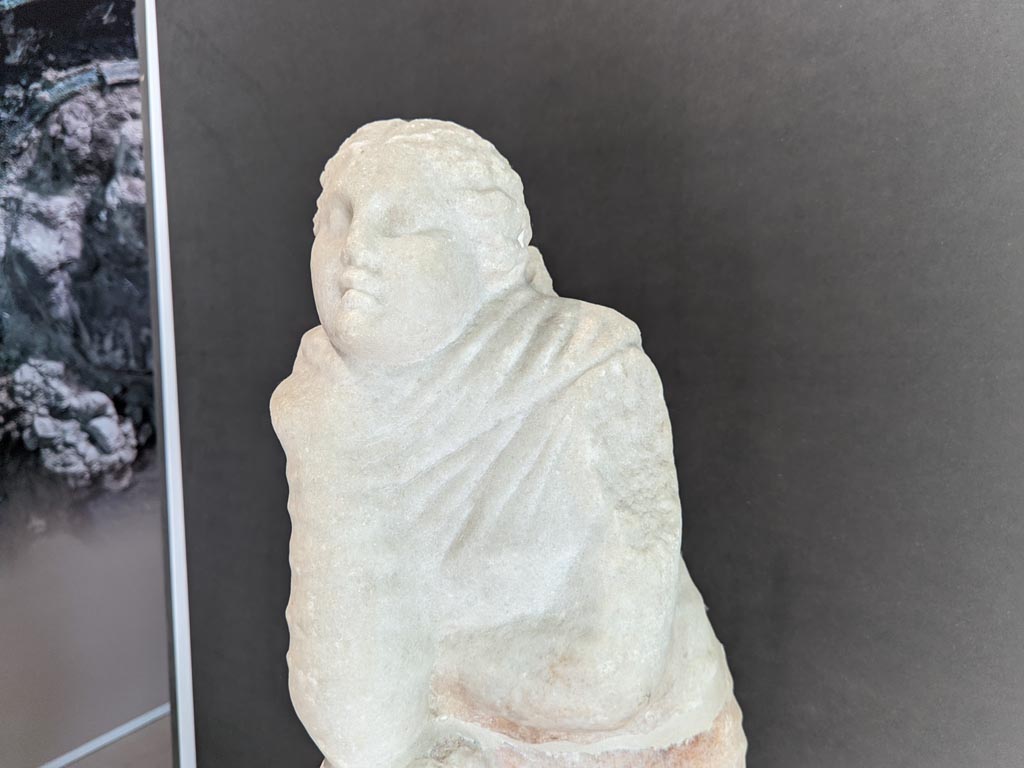
Detail of marble statue of the muse Polyhymnia, on display in exhibition in Palaestra. Photo courtesy of Giuseppe Ciaramella.

II.2.2 Pompeii. January 2023.
Marble statue of the muse Polyhymnia, on display in exhibition in Palaestra.
Photo courtesy of Johannes Eber.
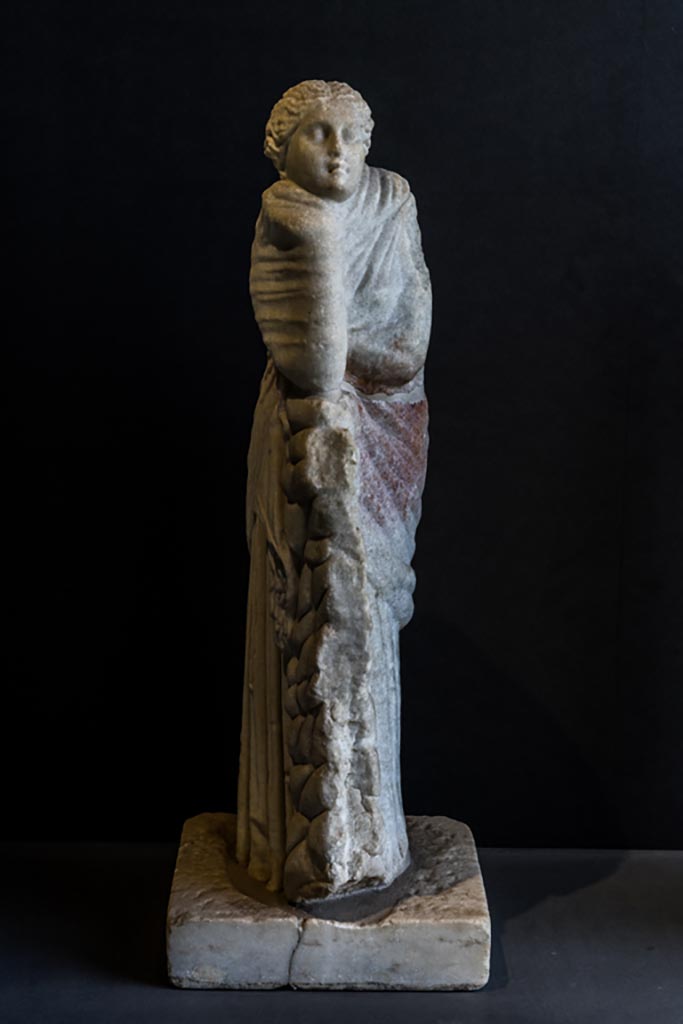
II.2.2 Pompeii. January 2023.
Marble statue of the muse Polyhymnia, on display in exhibition in Palaestra.
Photo courtesy of Johannes Eber.

II.2.2 Pompeii. Room “i”. Marble statue of the muse Polyhymnia. SAP inventory number 2917.
Photographed at “A Day in Pompeii” exhibition at Melbourne Museum. September 2009.

II.2.2 Pompeii. Room “i”. Statue of the muse Polyhymnia. SAP 2917.
There were nine goddesses who presided over the arts and sciences.
Polyhymnia was the muse of lyric poetry and singing.
The statue was one of several on bases between the pillars of the portico.
Photographed at “A Day in Pompeii” exhibition at Melbourne Museum. September 2009.
Jashemski describes the two surviving statues as, one of Polyhymnia (SAP 2917) and the second of Mnemosyne (SAP 2909).
The names on her photographs however are reversed.
See Jashemski, W. F., 1993. The Gardens of Pompeii, Volume II: Appendices. New York: Caratzas. (p. 80-1, Figs 84-85).

Room
“i”, looking south to pilaster on west side of temple with remaining
painted decoration.
Foto Annette Haug, ERC
Grant 681269 DÉCOR

II.2.2 Pompeii. December 2023.
Room “i”, looking south to temple at junction of upper and lower
euripus, see room “l” (L) for further photos. Photo courtesy of Miriam Colomer.

II.2.2 Pompeii. July 2017.
Room “i”, looking south to temple at junction of upper and lower
euripus, see room “l” (L) for further photos.
Foto Annette Haug, ERC
Grant 681269 DÉCOR.

II.2.2 Pompeii. March 2024. Room “i”, looking south-west to
temple. Photo courtesy of
Giuseppe Ciaramella.
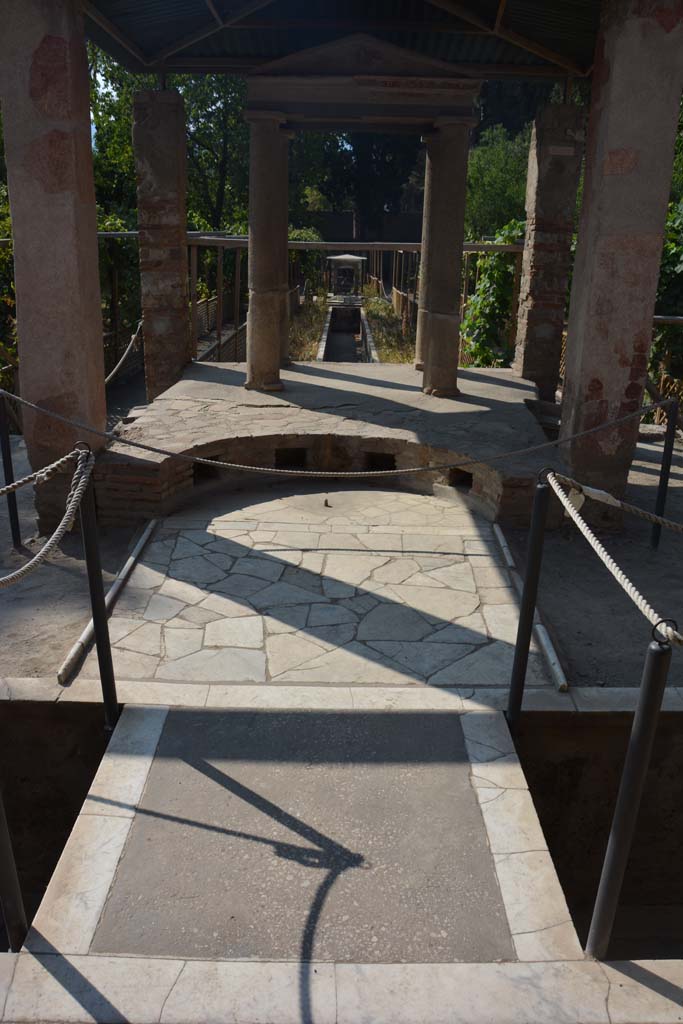
II.2.2 Pompeii. July 2017. Room “i”, looking south across flooring
at junction of upper and lower euripus.
Foto Annette Haug, ERC
Grant 681269 DÉCOR.

II.2.2 Pompeii. March 2024.
Room “i”, looking west towards temple at junction of upper and lower euripus. Photo courtesy of Giuseppe Ciaramella.

II.2.2 Pompeii. July 2017. Room “i”, looking south-east.
Foto Annette Haug, ERC
Grant 681269 DÉCOR.

II.2.2 Pompeii. July 2017.
Room “l” (L), looking south across garden from room “i”, on east
side of temple.
Foto Annette Haug, ERC
Grant 681269 DÉCOR.
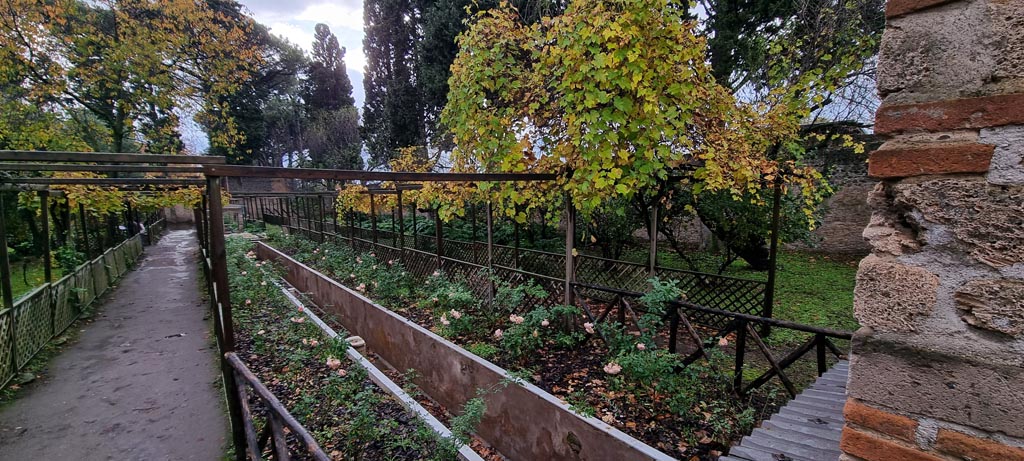
II.2.2
Pompeii. December 2023. Room
“l” (L), looking south across garden. Photo courtesy of Miriam Colomer.

II.2.2 Pompeii. July 2017.
Room “l” (L), looking south-west across garden from east side of temple
in room “i”, on upper euripus level.
Foto Annette Haug, ERC
Grant 681269 DÉCOR.
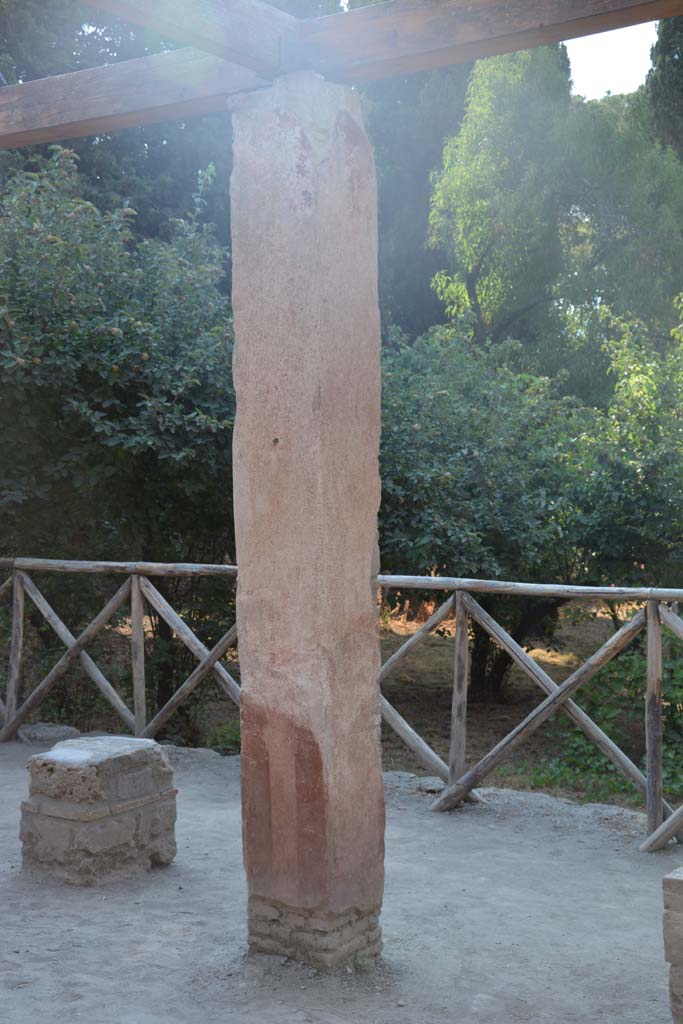
II.2.2 Pompeii. July 2017. Room “i”, remaining painted decoration
on lower pilaster.
Foto Annette Haug, ERC
Grant 681269 DÉCOR.

II.2.2 Pompeii. December 2007. Room “i”, detail of painting on garden pillar.
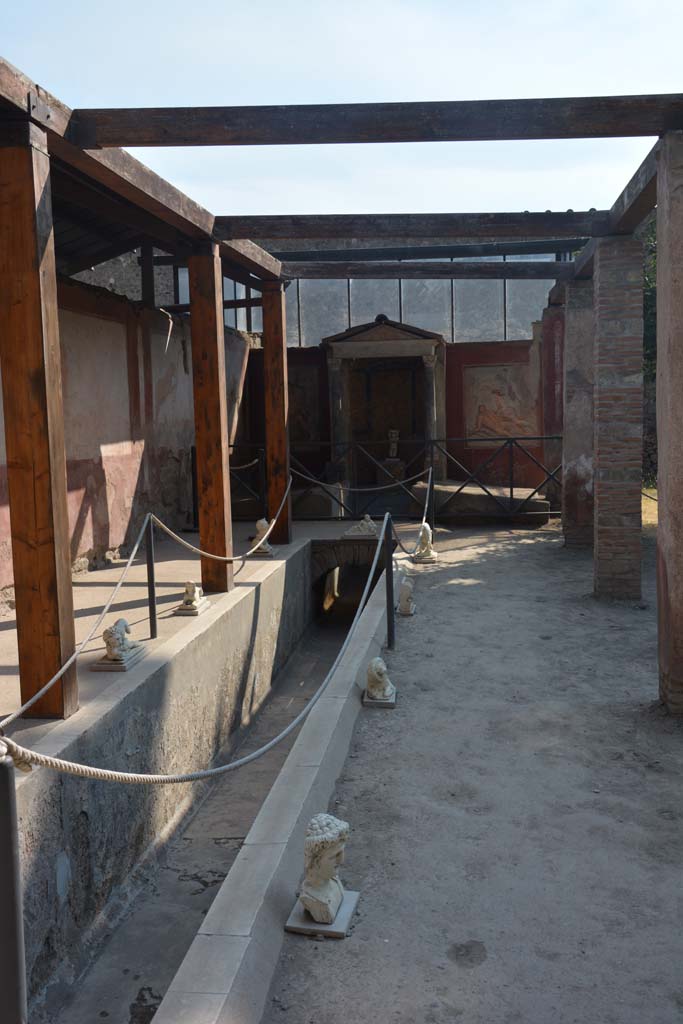
II.2.2 Pompeii. July 2017. Room “i”, looking east along upper
euripus to room “k”.
Foto Annette Haug, ERC
Grant 681269 DÉCOR.

II.2.2 Pompeii.
April 2022. Room “i”, looking north-east along upper euripus to room “k”. Photo courtesy of Giuseppe Ciaramella.

II.2.2 Pompeii. May 2016.
Room “i”, looking east along upper euripus water feature with garden ornaments in place. Photo courtesy of Buzz Ferebee.

II.2.2 Pompeii. December 2005. Room “i”, looking east along upper euripus water feature.

II.2.2 Pompeii. Room “i”, looking east along upper euripus water feature.
Photographed 1970-79 by Günther Einhorn, picture courtesy of his son Ralf Einhorn.

II.2.2 Pompeii. 1961.
Room “i”, looking east along upper euripus water feature. Photo by Stanley A. Jashemski.
Source: The Wilhelmina and Stanley A. Jashemski archive in the University of Maryland Library, Special Collections (See collection page) and made available under the Creative Commons Attribution-Non Commercial License v.4. See Licence and use details.
J61f0703
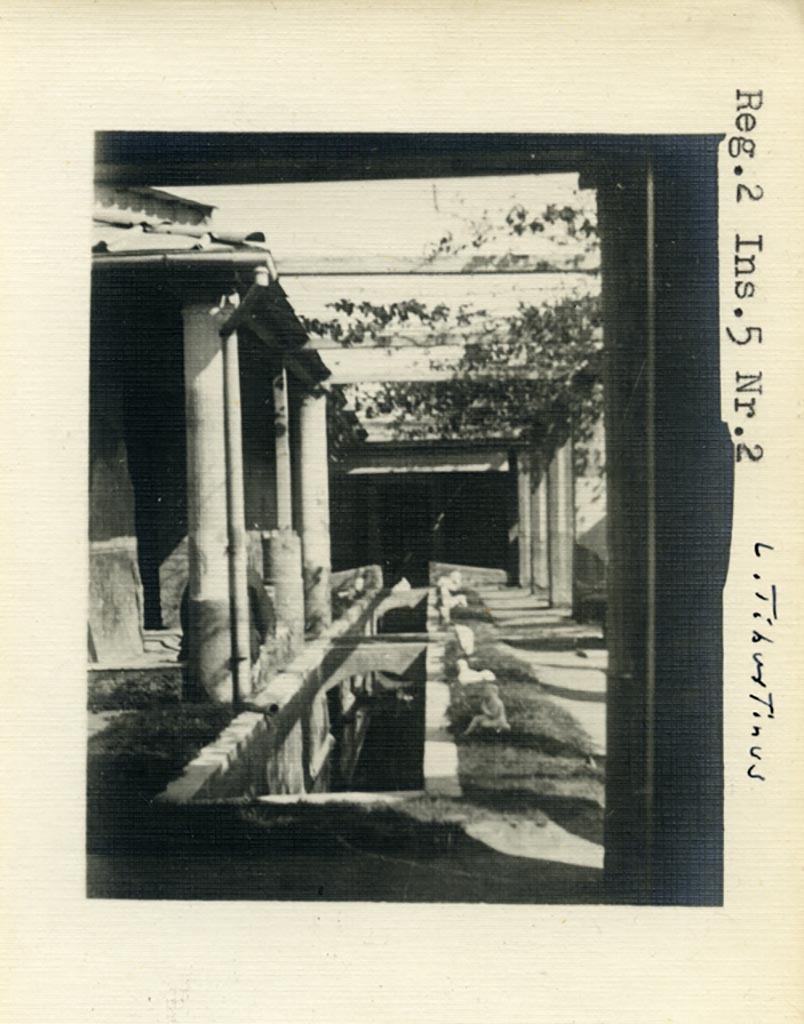
II.2.2 Pompeii. Pre-1937-1939. Room i, looking east along upper euripus.
In the original excavation records this house was known as II.5.2 before it was renumbered.
Photo courtesy of American Academy in Rome, Photographic Archive. Warsher collection no. 393.

II.2.2 Pompeii. March 2024. Room i, looking north-west along
upper euripus. Photo courtesy of
Giuseppe Ciaramella.
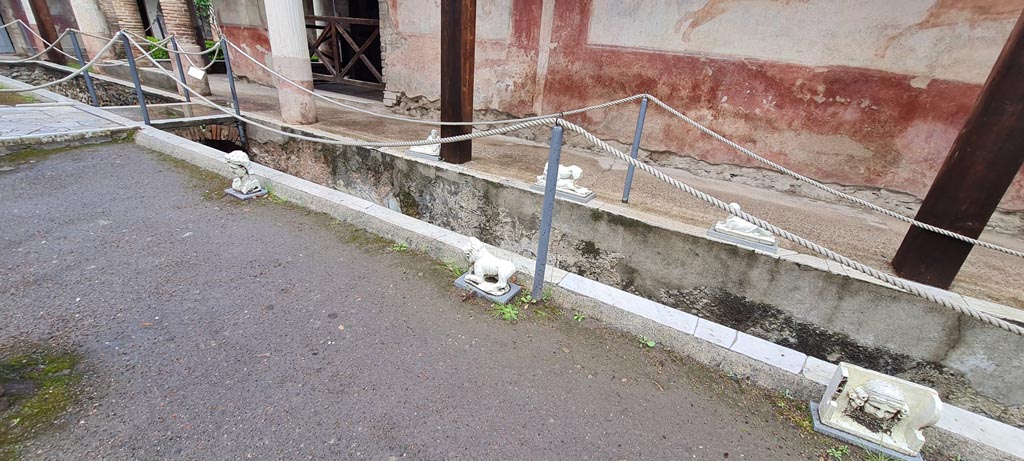
II.2.2 Pompeii.
April 2022. Room i, looking north-west along upper euripus. Photo courtesy
of Giuseppe Ciaramella.

II.2.2 Pompeii. May 2016.
Room “i”, white bust of a man, perhaps a young Dionysus replaced in the garden area. Photo courtesy of Buzz Ferebee.
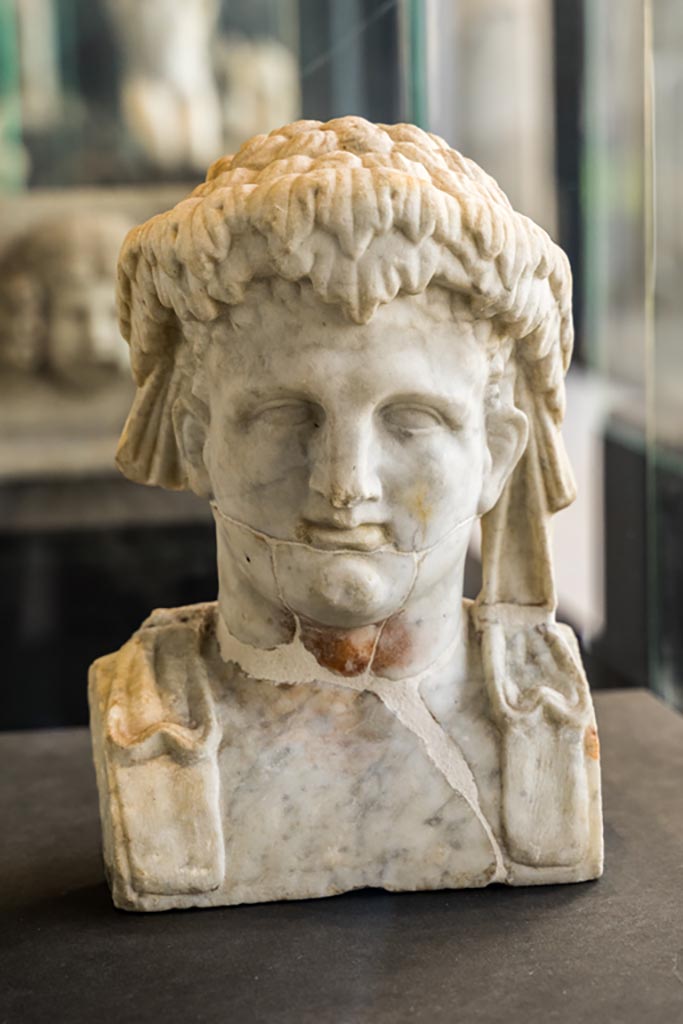
II.2.2 Pompeii. January 2023.
Room “i”, white marble bust of a man, perhaps a young Dionysus.
Found on the north side of the upper euripus in the garden.
On display in exhibition in Palaestra. Photo courtesy of Johannes Eber.
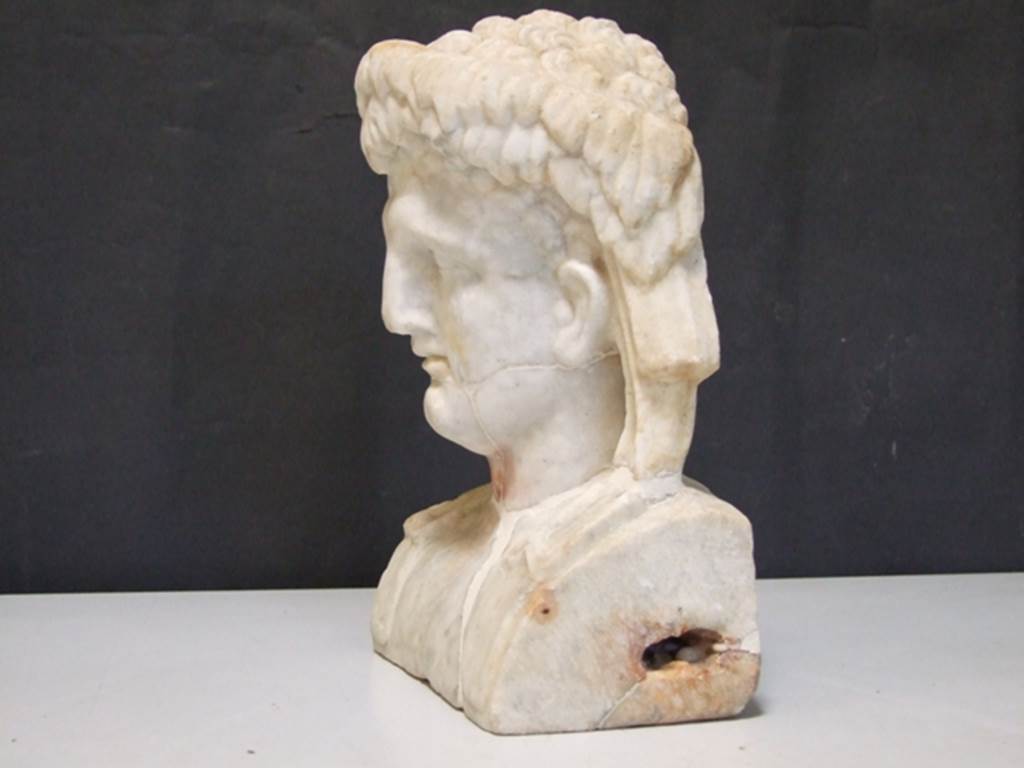
II.2.2 Pompeii. March 2009. Room “i”. White marble bust of a man, perhaps a young Dionysus.
Found on the north side of the upper euripus in the garden. SAP inventory number 20382.

II.2.2 Pompeii. March 2009. Room “i”. White marble bust of a man, perhaps a young Dionysus.
Found on the north side of the upper euripus in the garden. SAP inventory number 20382.

II.2.2 Pompeii. May 2016.
Room “i”. White statuette of a lion found on the north side of the upper euripus in the garden. Photo courtesy of Buzz Ferebee.

Room “i”, white statuette of a lion found on the north side of the upper euripus in the garden.
On display in exhibition in Palaestra. Photo courtesy of Johannes Eber

II.2.2 Pompeii. Room “i”. Found on the north side of the upper euripus in the garden.
White marble statuette of a lion eating fallen prey antelope. SAP inventory number 2929.
Photographed at “A Day in Pompeii” exhibition at Melbourne Museum. September 2009.

II.2.2 Pompeii, 1978. Room “i”. White marble statuette of a lion tearing an antelope to pieces.
SAP inventory number 2929. Found on the north side of the upper euripus in the garden. Photo by Stanley A. Jashemski.
Source: The Wilhelmina and Stanley A. Jashemski archive in the University of Maryland Library, Special Collections (See collection page) and made available under the Creative Commons Attribution-Non Commercial License v.4. See Licence and use details.
J78f0172
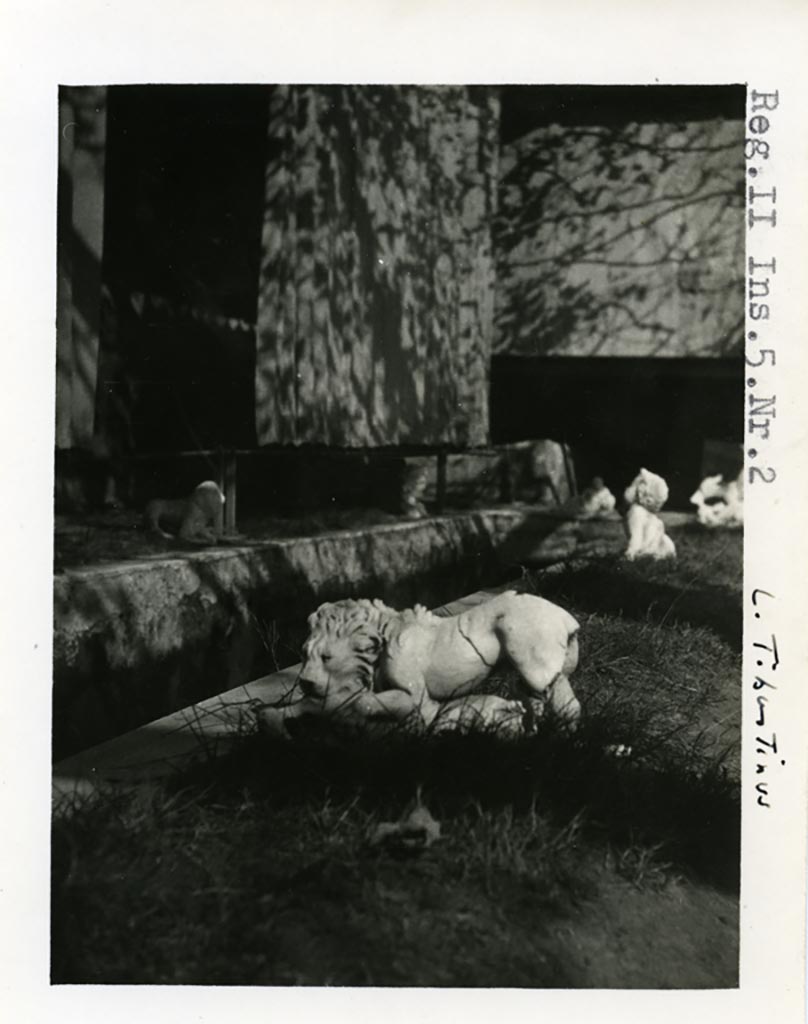
II.2.2 Pompeii. Pre-1937-39. Room “i”, statuettes on sides of upper euripus.
Photo courtesy of American Academy in Rome, Photographic Archive. Warsher collection no. 005.

II.2.2 Pompeii. January 2023.
Room “i”, white statuette of Sphinx, found on the north side of the upper euripus.
On display in exhibition in Palaestra. Photo courtesy of Johannes Eber
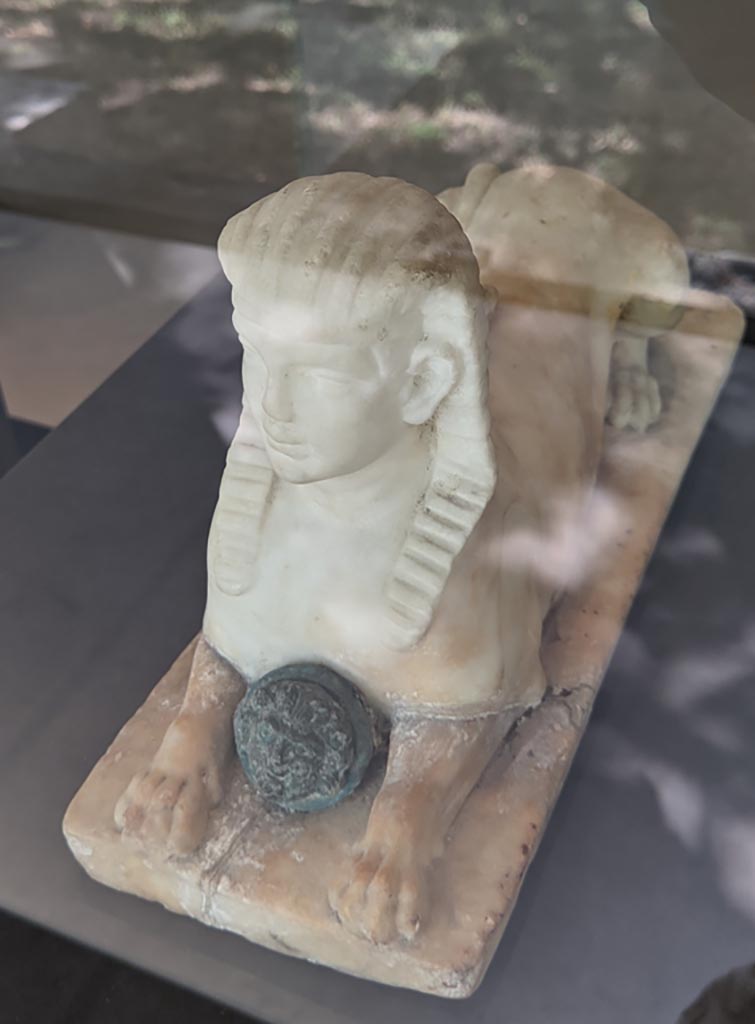
Room “i”, white statuette of Sphinx, found on the north side of the upper euripus, here on display in exhibition in Palaestra.
Photo courtesy of
Giuseppe Ciaramella.

On display in exhibition in Palaestra. Photo courtesy of Johannes Eber

II.2.2 Pompeii. March 2009. Room “i”. White marble statuette of Sphinx, with a face of a bronze gorgon between the front legs.
Found on the north side of the upper euripus in the garden in 1920. SAP inventory number 2930.

II.2.2 Pompeii. March 2009. Room “i”. White marble statuette of Sphinx, with a face of a bronze gorgon between the front legs.
Found on the north side of the upper euripus in the garden in 1920. SAP inventory number 2930.

II.2.2 Pompeii. May 2016.
Room “i”, white statuette of Sphinx, found on the north side of the upper euripus. Photo courtesy of Buzz Ferebee.

II.2.2 Pompeii. May 2016. Room “i”.
White statuette of a young Hercules strangling a snake found on the north side of the upper euripus. Photo courtesy of Buzz Ferebee.
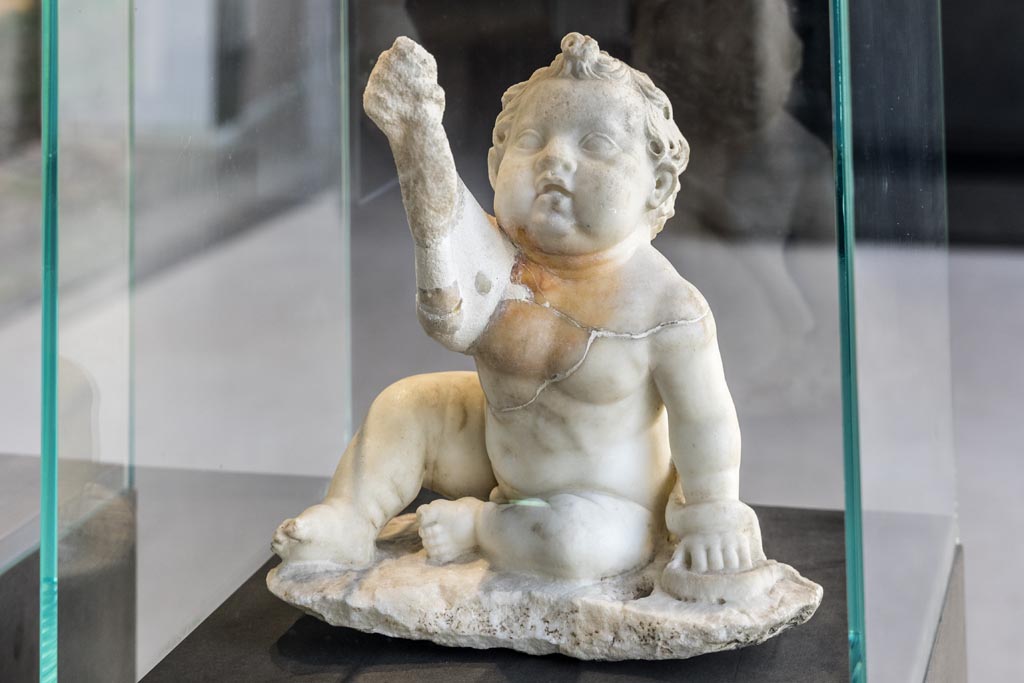
II.2.2 Pompeii. January 2023. Room “i”. White marble statuette of a young Hercules strangling a snake.
Found on the north side of the upper euripus in the garden in 1920. On display in exhibition in Palaestra. Photo courtesy of Johannes Eber.

II.2.2 Pompeii.
April 2022.
Room “i”. White marble statuette of a young Hercules strangling a snake. On display in exhibition in Palaestra.
Photo courtesy of Giuseppe Ciaramella.
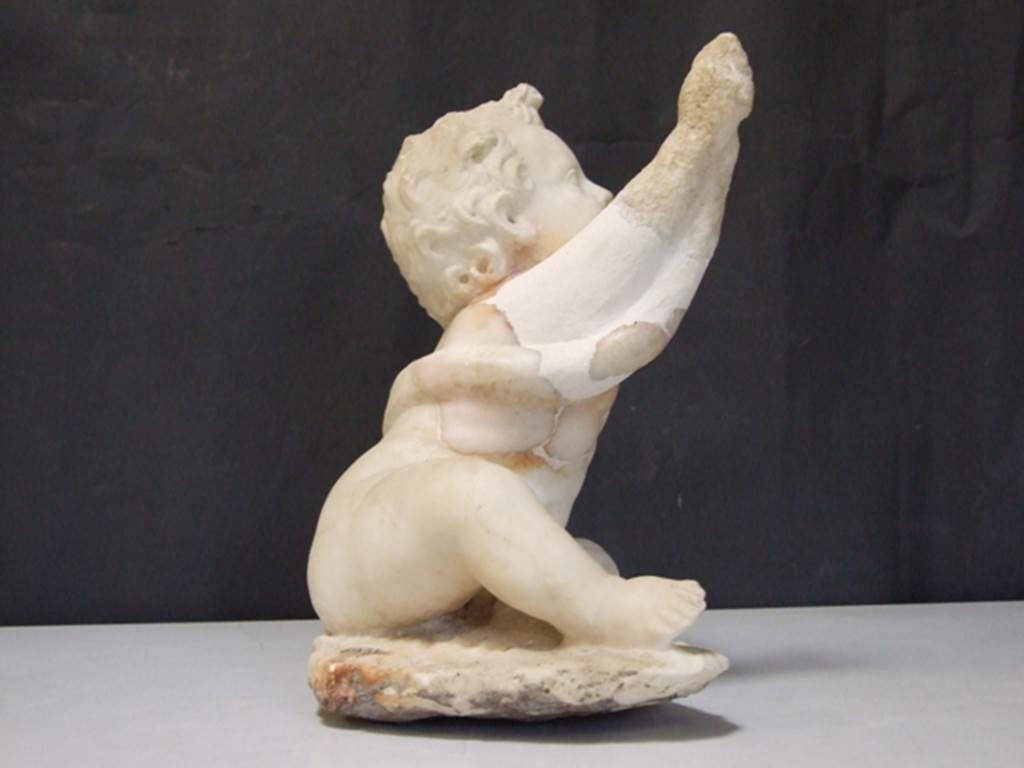
II.2.2 Pompeii. March 2009. Room “i”. White marble statuette of a young Hercules strangling a snake.
Found on the north side of the upper euripus in the garden in 1920. SAP inventory number: 2932.
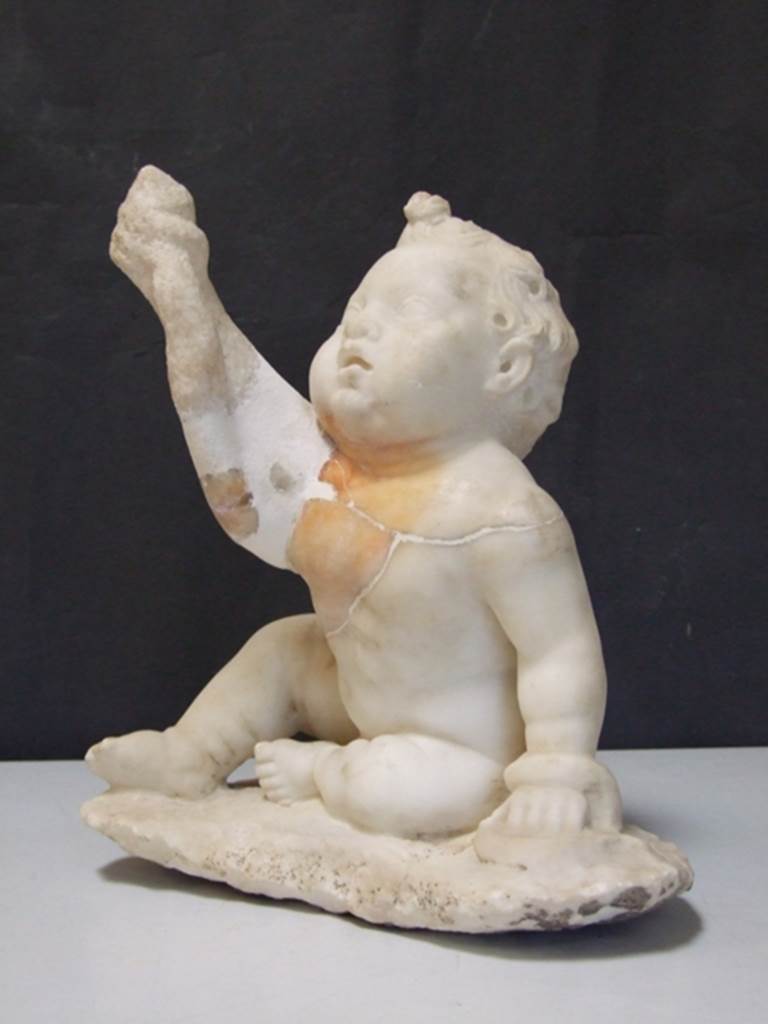
II.2.2 Pompeii. March 2009. Room “i”. White marble statuette of a young Hercules strangling a snake.
Found on the north side of the upper euripus in the garden in 1920. SAP inventory number 2932.

II.2.2 Pompeii. 1978.
Room “i”. White marble statuette of a young Hercules strangling a snake, found in 1920.
Photo by Stanley A. Jashemski.
Source: The Wilhelmina and Stanley A. Jashemski archive in the University of Maryland Library, Special Collections (See collection page) and made available under the Creative Commons Attribution-Non Commercial License v.4. See Licence and use details.
J78f0403

II.2.2 Pompeii. May 2016.
Room “i”. White statue of a lion found on the south side of the upper euripus. Photo courtesy of Buzz Ferebee.
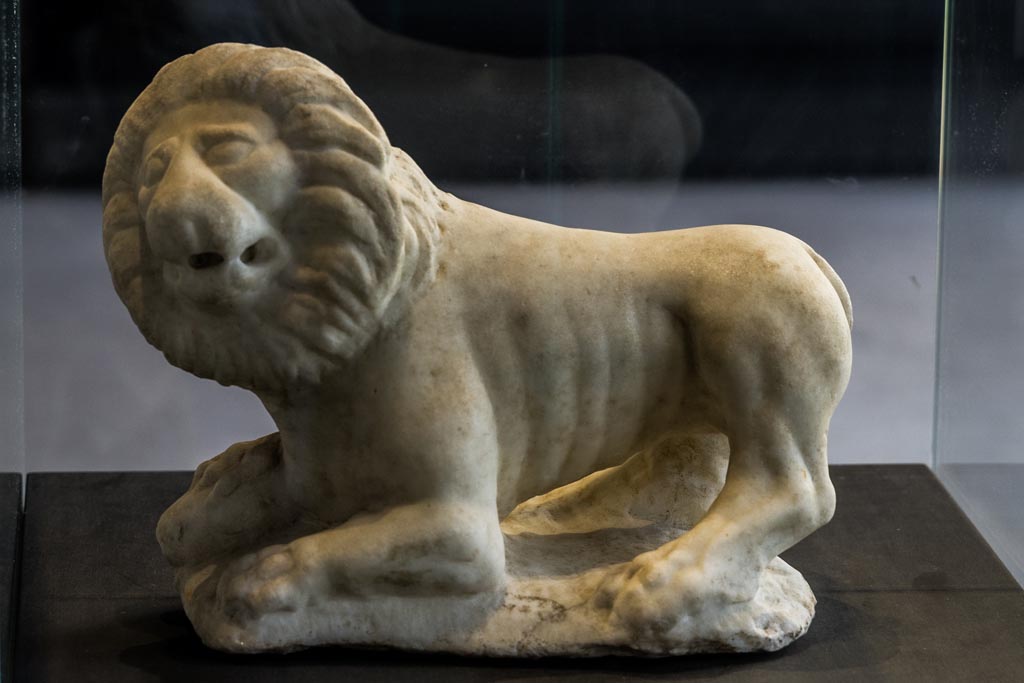
II.2.2 Pompeii. January 2023. Room “i”. White marble statue of a lion with a ram’s head beneath its paw.
Found on the south side of the upper euripus in the garden. On display in exhibition in Palaestra. Photo courtesy of Johannes Eber.
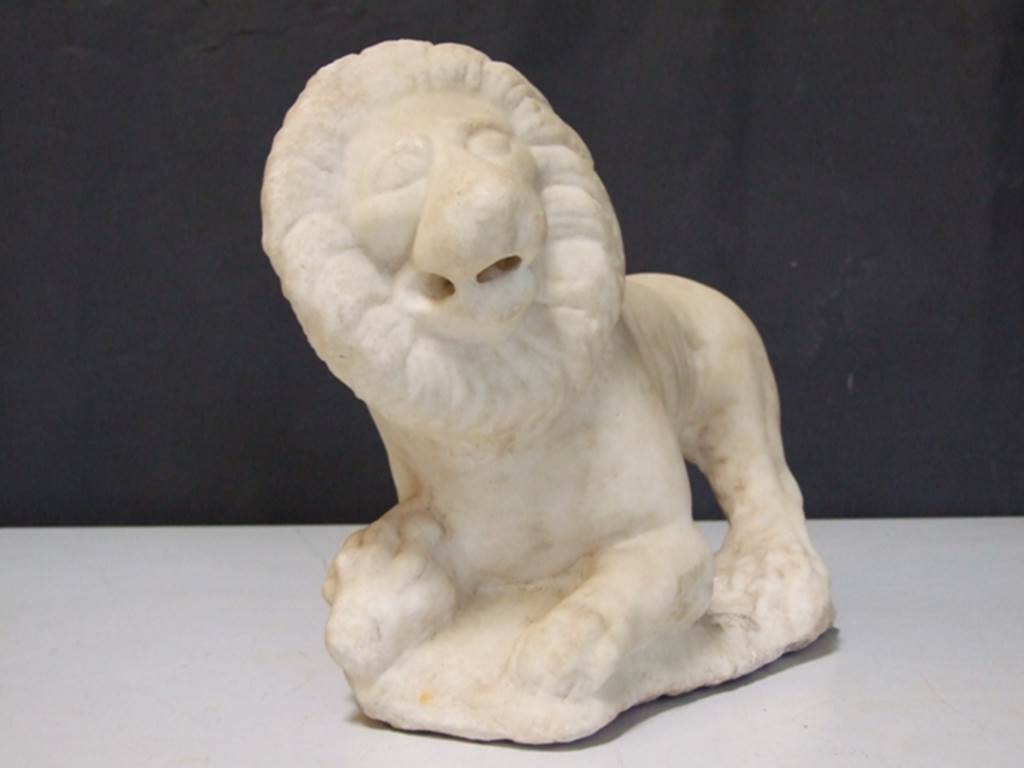
II.2.2 Pompeii. March 2009. Room “i”. White marble statue of a lion with a ram’s head beneath its paw.
Found on the south side of the upper euripus in the garden. SAP inventory number 20371.
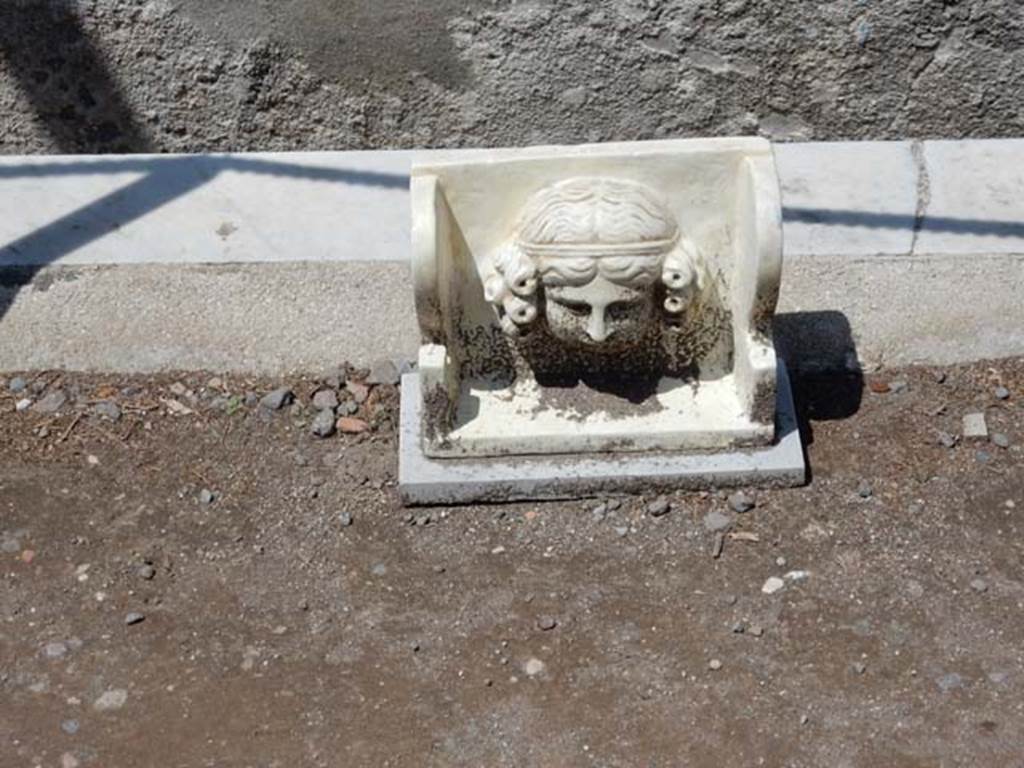
II.2.2 Pompeii. May 2016.
Room “i”. White statue of mask of a woman found on the south side of the upper euripus. Photo courtesy of Buzz Ferebee.

II.2.2 Pompeii. January 2023.
Room “i”. White statue of mask of a woman found on the south side of the upper euripus. On display in exhibition in Palaestra.
Photo courtesy of Johannes Eber.

II.2.2 Pompeii. March 2009. Room “i”. White marble mask of a woman.
Found on the south side of the upper euripus in the garden in 1920. SAP inventory number 2928.

II.2.2 Pompeii. March 2009. Room “i”. White marble mask of a woman.
Found on the south side of the upper euripus in the garden in 1920. SAP inventory number 2928.

II.2.2 Pompeii. March 2009. Room “i”. White marble mask of a woman.
Found on the south side of the upper euripus in the garden in 1920. SAP inventory number 2928.
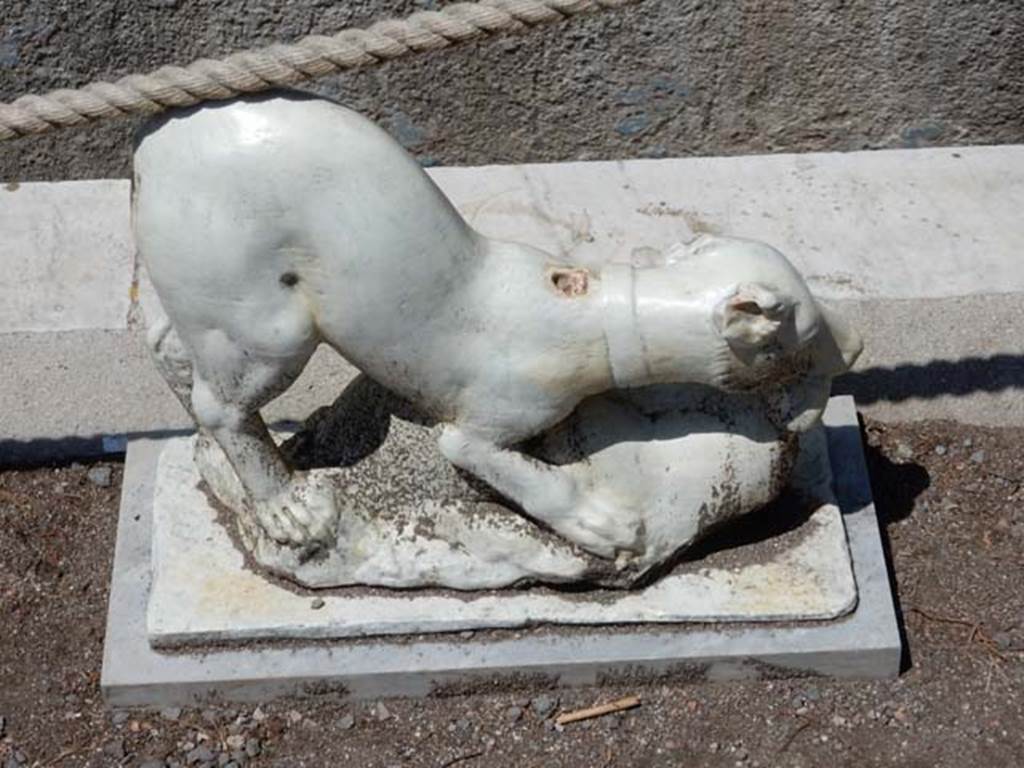
II.2.2 Pompeii. May 2016.
Room “i”. Statue group of dog and faun found on the south side of the upper euripus. Photo courtesy of Buzz Ferebee.
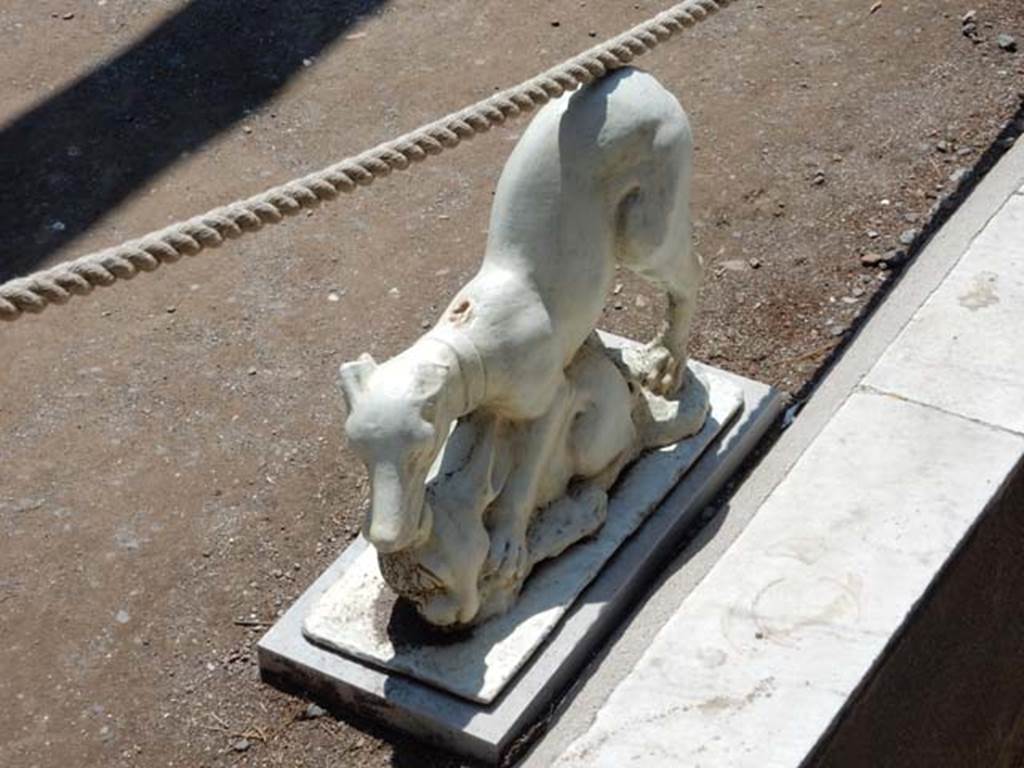
II.2.2 Pompeii. May 2016.
Room “i”. Statue group of dog and faun found on the south side of the upper euripus. Photo courtesy of Buzz Ferebee.
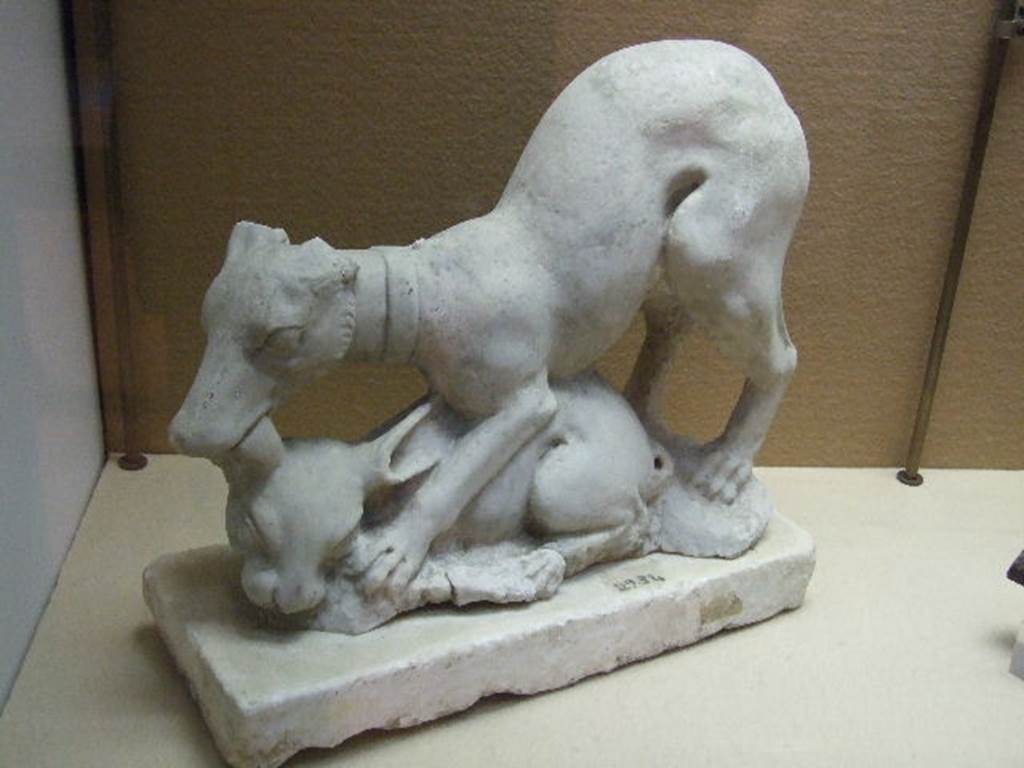
II.2.2 Pompeii. Room “i”. Marble group of dog and faun. Found on the south side of the upper euripus in the garden in 1920.
SAP inventory number 2934. Now in Boscoreale Antiquarium.
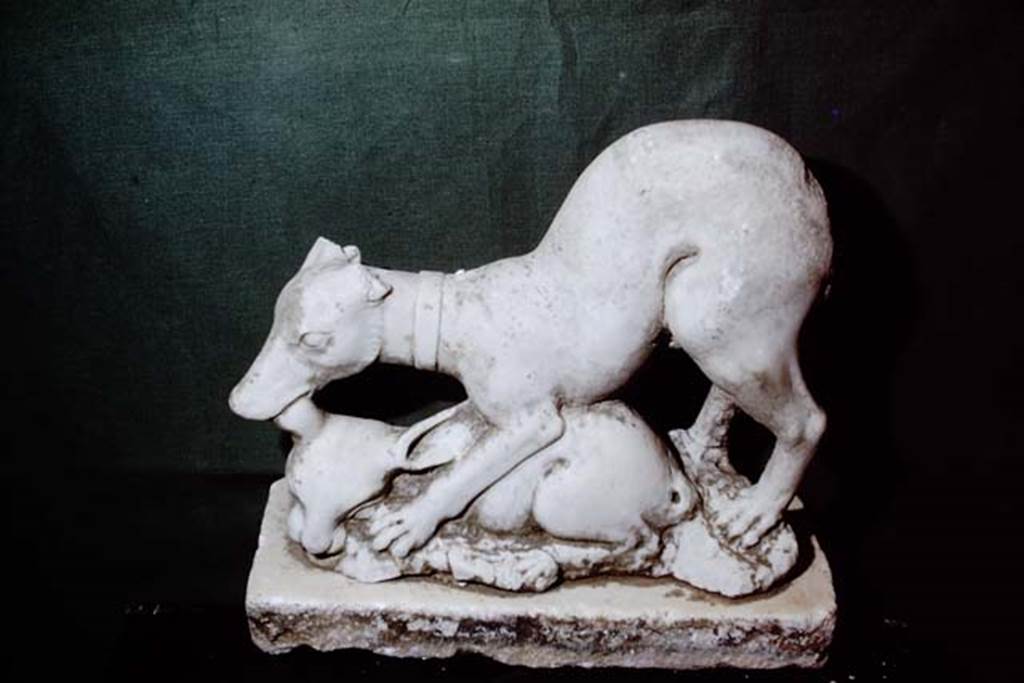
II.2.2 Pompeii. 1978. Room “i”. Marble group of dog and faun. Photo by Stanley A. Jashemski.
Source: The Wilhelmina and Stanley A. Jashemski archive in the University of Maryland Library, Special Collections (See collection page) and made available under the Creative Commons Attribution-Non Commercial License v.4. See Licence and use details.
J78f0179
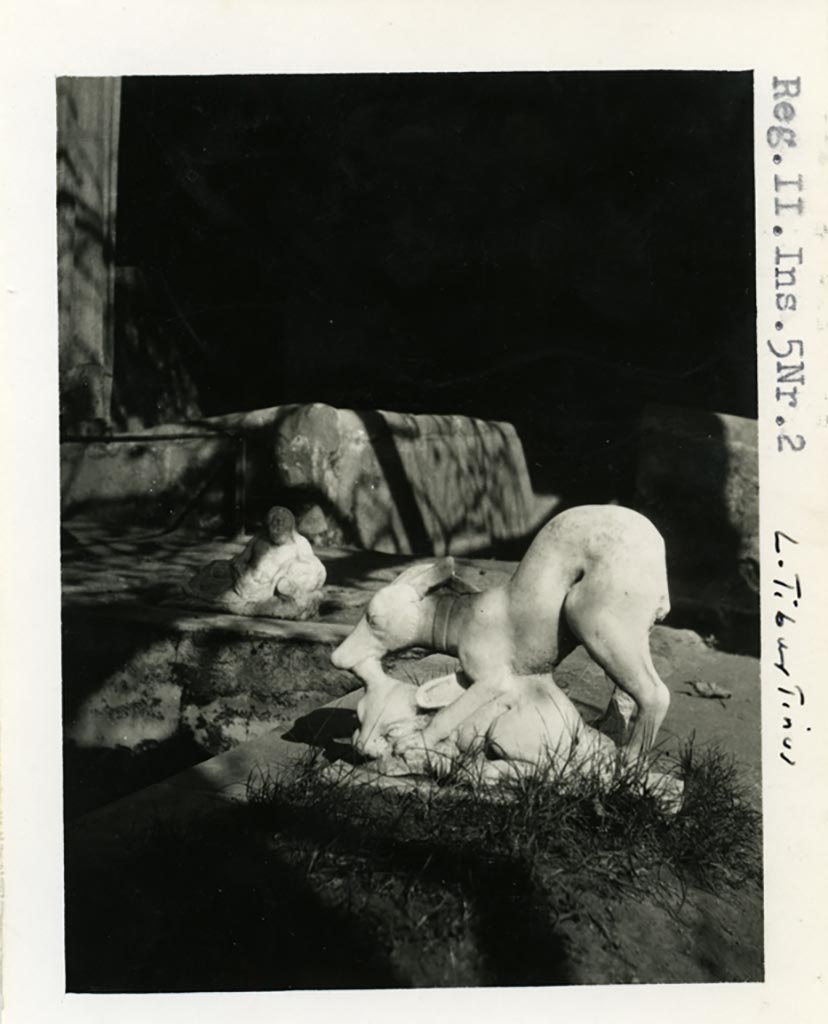
II.2.2 Pompeii. Pre-1937-39. Room “i”, statuettes on sides of upper euripus.
Photo courtesy of American Academy in Rome, Photographic Archive. Warsher collection no. 004.
Part 1 2 3 4 5 6 7 8 9 10 11 12 13 Plan